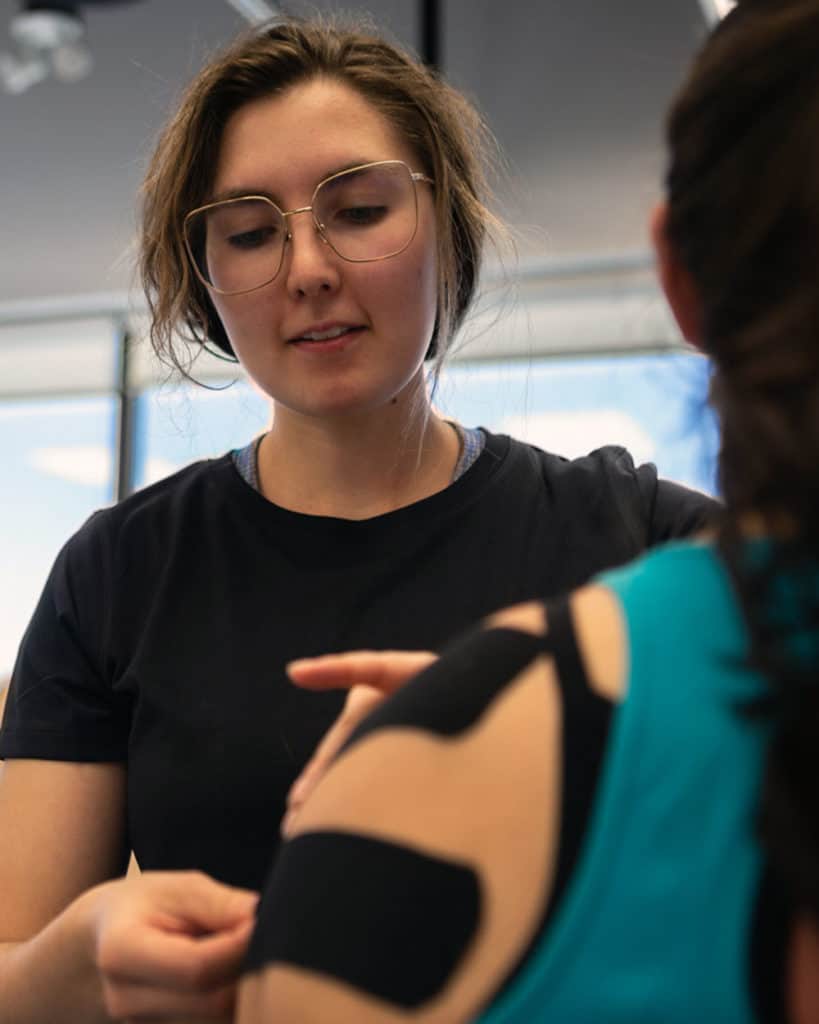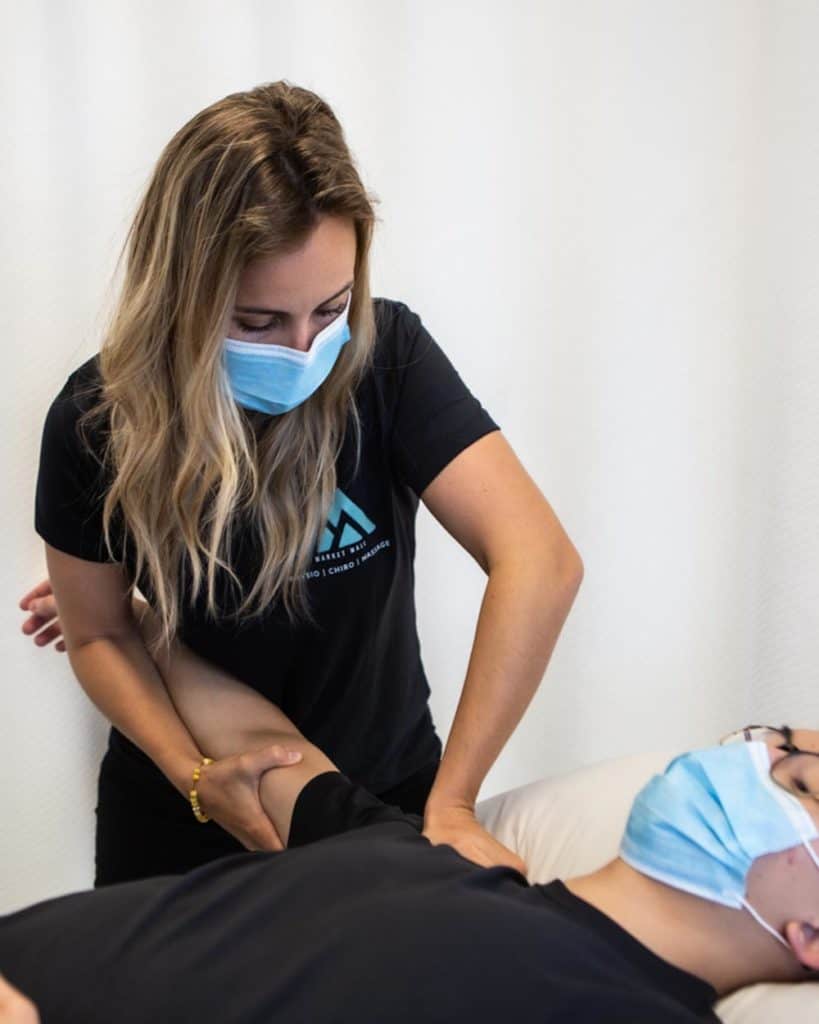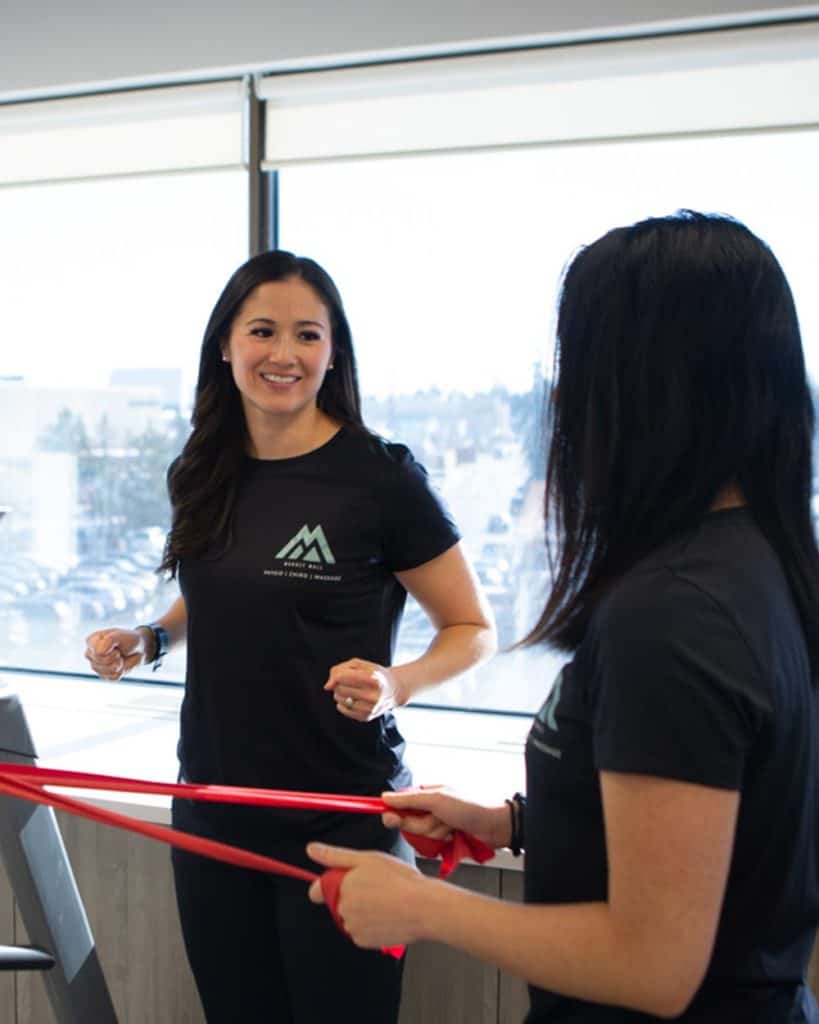
What Every Clinician Needs to Know About Building a Personal Brand in Private Practice
What Every Clinician Needs to Know About Building a Personal Brand in Private Practice Takeaways You already have a personal brand, make sure it’s working
Start Feeling Better In As Few As 3 Visits.
Back pain is a common issue that affects millions of people around the world. It can range from mild discomfort to severe pain that hinders daily activities. Back pain is not a disease, but a symptom that can be caused by various underlying issues. It is essential to address and treat back pain to prevent it from becoming chronic and affecting one’s quality of life.

Tell us what hurts, and we will treat your pain in the shortest time possible. Get effective treatment for your condition in less than 30 minutes so you can get back to doing what you live… pain-free.
Get a personalized care plan so you can feel better in as few as 3 visits. We use advanced therapy techniques proven to ease pain, accelerate recovery, improve mobility and overall health.


Our team of licensed physiotherapists, chiropractors, registered massage therapists are professionals and in human anatomy and biomechanics. You will get the perfect care plan to target the root of your pain so you can get back to doing what you love, everyday!
This appointment is your opportunity to tell us what hurts and discover whether back pain is a good fit for you! During this session, you will talk with a physiotherapist on a phone call (or online) and create the right care plan specifically for your pain. There is no obligation, this session is only to find out if physiotherapy can help you getting back to doing the things you love in life.
If you’re like most you don’t want to wait days or weeks to get treated for your pain. And you don’t want to have to spend your time calling nearby clinics to find the one who can see you the fastest.
That’s where PainHero comes In – Canada’s largest network of physiotherapists, chiropractors, and registered massage therapists.
Our Platform is used by clinics where they post their open appointment times. So you can quickly compare availability and wait times for clinics near you without having to pick up the phone. Then book an appointment within seconds and even see someone that day if you want. So you can get back to doing the things you love faster.
Plus unlike other sites who let anyone on or just rely on google reviews. We hand pick clinics based on a 50-point inspection, which includes everything from checking reviews, ratings, reputation, history, complaints, satisfaction, trust, cost, and general excellence.
Improve the way your body moves so you can continue to do the things you love. PainHero is Canada’s largest network of physiotherapists, chiropractors, and registered massage therapists. Our mission is to make it easy for you to find the top clinics in your community. We handpick the top clinics using our 50 point inspection based on patient reviews, complaints, and patient outcomes.
Whether you’re seeking pain relief or preventative care, you can expect our patient-centric approach to be new and different from any healthcare experience you’ve had before. Perhaps even life-changing.
1460+
Clinics
2172+
Caring Therapists
2M+
Patient Visits


There are several causes of back pain whether it be a disc injury, arthritis or a muscle strain. It is essential to identify the underlying cause of low back pain to receive appropriate treatment. One of the most common causes of back pain is muscular and skeletal issues. These can include strains, sprains, and spasms in the muscles and ligaments in the back. These issues can be caused by sudden movements, lifting heavy objects, or overuse of the back muscles.
Poor posture habits and body mechanics can also contribute to back pain. Poor posture habits can put additional strain on the muscles and ligaments in the back, leading to pain and discomfort. Body mechanics refer to the way one moves and performs daily activities. If one uses sub-adequate body mechanics when lifting or bending, it can lead to back pain.
Injuries and accidents can also cause back pain. These can include falls, car accidents, or sports injuries. Injuries can cause fractures, herniated discs, or other issues that can lead to back pain. It is important to seek medical attention immediately if one experiences back pain after an injury.
Degenerative diseases such as osteoarthritis can also contribute to back pain. These conditions occur when the joints or discs in the spine degenerate over time, causing pain and discomfort.
Tips to improve your posture courtesy of Kinect Rehab & Performance. (Read the caption)

The following contains a few types of back pain. It is not exhaustive but explains some of the more common causes:
Acute Back Pain
Acute back pain is the most common type of back pain and is typically caused by a sudden injury or strain to the muscles or ligaments in the back. Symptoms of acute back pain include sudden pain and stiffness in the back, difficulty moving, and muscle spasms. Acute back pain typically resolves on its own within a few days or weeks, but over-the-counter pain medications and self-care measures, such as ice and heat therapy, can provide relief.
Chronic Back Pain
Chronic back pain is characterized by pain that lasts for three months or longer. It is often caused by an underlying condition, such as a disc injury or osteoarthritis. Symptoms of chronic back pain include persistent pain and stiffness in the back, difficulty moving, and decreased mobility. Treatment options for chronic back pain include physical therapy, pain management techniques, and surgery in severe cases.
Radicular Pain
Radicular pain occurs when a nerve in the lower back is irritated and causes pain in the lower extremity. The most common form of this is sciatica, which occurs when the sciatic nerve, which runs from the lower back down the legs, becomes compressed or irritated. Symptoms of radicular pain include pain that radiates down the legs, numbness or tingling in the legs or feet, and weakness in the legs. Treatment options for radicular pain include physical therapy, pain medications, and surgery in severe cases.
Mechanical Back Pain
Mechanical back pain is caused by a problem with the structure of the spine, such as a herniated disc or spinal stenosis. Symptoms of mechanical back pain include pain that is worse with movement or activity, stiffness in the back, and difficulty standing or walking. Treatment options for mechanical back pain include physical therapy, pain medications, and surgery in severe cases.
Referred Pain
Referred pain occurs when pain is felt in an area of the body that is not the source of the pain. Radicular pain, explained above, is a type of referred pain. Other examples include pain in the lower back that is referred pain from a problem in the kidneys or uterus. Symptoms of referred pain include pain that is difficult to pinpoint, pain that is not relieved by typical back pain treatments, and additional symptoms related to the underlying condition. Treatment for referred pain depends on the underlying condition causing the pain.

Back pain is a common issue that can greatly impact an individual’s quality of life. Physiotherapy is a non-invasive treatment option that can effectively relieve back pain and improve mobility. Here’s how they can help:
1.) Assessing the Cause of Back Pain
The first step in relieving back pain through physiotherapy is assessing the underlying cause of the pain. A physiotherapist will conduct a physical examination to determine the cause of the pain and identify any areas of weakness or imbalance in the muscles or joints. The physiotherapist will also consider the individual’s medical history and lifestyle factors that may be contributing to the pain.
2.) Developing a Customized Treatment Plan
Based on the assessment, the physiotherapist will develop a customized treatment plan that is tailored to the individual’s needs. The treatment plan may include exercises, manual therapy, and education on proper body mechanics and posture. The goal of the treatment plan is to address the underlying cause of the pain and promote healing.
3.) Improving Range of Motion and Flexibility
Physiotherapy can help improve range of motion and flexibility in the back muscles and joints. This can help reduce stiffness and improve mobility, making it easier to perform daily activities. Range of motion exercises may include gentle stretches and movements that target specific areas of the back.
4.) Strengthening Exercises
Strengthening exercises can help build strength in the muscles that support the back. This can help reduce strain on the back and prevent future injury. Strengthening exercises may include resistance training, such as using weights or resistance bands, or bodyweight exercises, such as planks or bridges.
5.) Manual Therapy
Manual therapy techniques, such as massage or manipulation, can help reduce muscle tension and improve circulation in the affected area. This can help relieve pain and promote healing. The physiotherapist may also use techniques such as mobilization or manipulation to improve joint mobility.
6.) Education on Proper Body Mechanics and Posture
Physiotherapy can also provide education on proper body mechanics and posture. This can help individuals avoid movements or positions that may exacerbate their back pain. The physiotherapist may provide tips on proper lifting techniques or recommend ergonomic changes to the individual’s work environment.
7.) Pain Management Techniques
In addition to the above techniques, physiotherapy can also provide back pain relief techniques to help individuals manage their pain. This may include heat or ice therapy, transcutaneous electrical nerve stimulation (TENS), or ultrasound therapy.
In conclusion, physiotherapy is a non-invasive treatment option that can effectively relieve back pain and improve mobility. By assessing the underlying cause of the pain, developing a customized treatment plan, and incorporating a variety of techniques such as exercises, manual therapy, and education, physiotherapy can help individuals reduce their pain and improve their quality of life.
Benefits Of Laser Therapy For Back Pain courtesy of Concept of Movement Physiotherapy. (Read the caption)

Acute back pain, which is usually caused by a sudden injury or strain to the muscles or ligaments in the back, typically resolves on its own within a few days or weeks. If the pain persists for longer than four weeks, it may indicate a more severe injury and medical attention should be sought.
Chronic back pain, which is characterized by pain that lasts for three months or longer, is often caused by an underlying condition, such as a disc bulge or osteoarthritis. If chronic back pain persists for longer than three months, it is essential to seek medical attention to identify the underlying cause and receive appropriate treatment.
It is also important to note that back pain that is accompanied by additional symptoms, such as numbness or tingling in both legs or loss of bladder or bowel control, requires immediate medical attention. These symptoms may indicate a more severe underlying condition, such as a spinal cord injury.
Individuals who experience back pain should seek medical attention if the pain persists or worsens over time. Medical attention may include a physical examination, diagnostic tests such as X-rays or MRI scans, and treatment options such as medication, physical therapy, or surgery.
Preventative measures such as exercise, maintaining a healthy weight, and practicing proper body mechanics and posture can also help reduce the likelihood of developing back pain.
Find out whether back pain can help you get back to doing the things you love in life.

If left untreated, back pain can lead to several complications that can greatly impact an individual’s quality of life. Here are some of the potential consequences of leaving back pain untreated:
Reduced Mobility: Untreated back pain can make it difficult to perform daily activities such as walking, bending, or lifting. This can greatly reduce an individual’s mobility and independence.
Decreased Quality of Life: Chronic back pain can have a significant impact on an individual’s quality of life, leading to depression, anxiety, and social isolation.
Nerve Damage: If back pain is caused by a herniated disc or other structural issues, it can lead to nerve damage if left untreated. This can cause numbness, tingling, or weakness in the arms or legs.
Loss of Bladder or Bowel Control: In severe cases of back pain, nerve damage can cause loss of bladder or bowel control, which requires immediate medical attention.
Increased Risk of Falls: Chronic back pain can increase the risk of falls, which can lead to further injury or disability.
Dependency on Pain Medications: If left untreated, chronic back pain may require the use of pain medications to manage symptoms. This can lead to dependency and potential addiction to these medications.
Surgery: In some cases, untreated back pain may require surgical intervention to correct the underlying issue. Surgery is typically recommended as a last resort after other treatment options have been exhausted.
In conclusion, leaving back pain untreated can lead to several complications that can greatly impact an individual’s quality of life.

Back pain is a common condition that affects millions of people around the world. However, not all pain in the back is actually due to a problem with the back itself. There are several conditions that can be mistaken for back pain, leading to misdiagnosis and improper treatment. Here are some of the conditions that can be mistaken for back pain:
Kidney Stones: Kidney stones are small, hard mineral deposits that can form in the kidneys and cause severe pain in the lower back. This pain can be mistaken for back pain, as it often occurs in the same area. Other symptoms of kidney stones include pain during urination, nausea, and vomiting.
Gallstones: Gallstones are small, hard deposits that can form in the gallbladder and cause pain in the upper back and abdomen. This pain can be mistaken for back pain, as it often radiates to the back. Other symptoms of gallstones include nausea, vomiting, and fever.
Fibromyalgia: Fibromyalgia is a chronic condition that causes widespread pain and tenderness throughout the body, including the back. This pain can be mistaken for back pain, as it can be severe and debilitating. Other symptoms of fibromyalgia include fatigue, sleep disturbances, and mood changes.
Osteoporosis: Osteoporosis is a condition that causes the bones to become weak and brittle, leading to an increased risk of fractures. Back pain is a common symptom of osteoporosis, as it can result from compression fractures in the spine. However, this pain may be mistaken for regular back pain, leading to a delay in diagnosis and treatment.

Two potential causes of back pain are kidney problems and muscle strains. It can sometimes be challenging to differentiate between the two, as the symptoms can be similar. Here are some ways to determine if your back pain is due to a kidney problem or muscle strain:
Location of Pain: Kidney pain is typically felt in the lower back, just below the ribcage. It can be on one side or both and may radiate to the abdomen or groin. Muscle strains, on the other hand, usually occurs in the lower back and can be on one side or both.
Nature of Pain: Kidney pain is often described as a sharp, stabbing pain, whereas muscle strain pain is usually a dull ache. Kidney pain may also be accompanied by a burning sensation, and the pain may increase when urinating or during sexual activity. Muscle strain pain may be worse with movement or certain positions.
Other Symptoms: Kidney problems may also cause other symptoms, such as fever, nausea, vomiting, and urinary problems, including pain or difficulty urinating. Muscle strain pain may be accompanied by muscle spasms and stiffness.
Medical History: If you have a history of kidney problems, such as kidney stones or kidney disease, you may be more likely to experience kidney-related back pain. If you have a history of back injuries or chronic muscle pain, you may be more likely to experience muscle strain-related back pain.
Diagnostic Tests: If your doctor suspects a kidney problem, they may order diagnostic tests such as a urine test, blood test, or imaging tests such as a CT scan or MRI. If they suspect muscle strain, they may perform a physical exam to assess your range of motion and muscle strength.
Tips to recover from pain faster courtesy of Dynamic Health Physiotherapy P.C. Inc. (Read the caption)

Using a heating pad is a common way to relieve back pain, muscle tension, and stiffness. However, it is important to use a heating pad correctly to avoid burning your skin or causing further injury. One common question is how long you should leave a heating pad on your back. Here are some guidelines:
Start with 15-20 Minutes: The general rule of thumb is to start with 15-20 minutes of heat therapy and gradually increase the time as needed. This allows your skin and muscles to adjust to the heat and prevent burns or other injuries.
Don’t Exceed 30-40 Minutes: It is recommended not to exceed 30-40 minutes of heat therapy in one sitting. Prolonged exposure to heat can cause burns or damage to the skin and muscles.
Take Breaks: It is essential to take breaks between heating sessions to allow your skin and muscles to cool down. You can use a heating pad for multiple sessions throughout the day, but it is important to take breaks of at least 30 minutes between each session.
Check for Burns or Irritation: While using a heating pad, it is crucial to check your skin regularly for any signs of burns or irritation. If you notice any redness, swelling, or blisters, stop using the heating pad immediately.
Follow Manufacturer’s Instructions: Different heating pads may have different recommended usage times, so it is important to follow the manufacturer’s instructions. Some heating pads may also have automatic shut-off features after a certain amount of time, which can prevent overheating and injury.
In addition to these guidelines, it is also essential to use a heating pad safely. Always use a heating pad on a flat surface and avoid using it while sleeping. Never apply a heating pad directly to the skin, and always place a towel or cloth between the heating pad and your skin to prevent burns.
There you have it, the ultimate guide to back pain! If you’d like to see if physiotherapy can help relieve your back pain. Just use the search box on this page to find the top clinics near you.

What Every Clinician Needs to Know About Building a Personal Brand in Private Practice Takeaways You already have a personal brand, make sure it’s working

Why Relying Only on Assessments Is Risky and What to Add to Diversify Your Revenue Takeaways Assessments are important, but they’re not enough to build

How to Coach Clinicians Who Are Struggling With Patient Experience or Retention Takeaways Coaching is about support, not blame. Go in with empathy and clarity.
Both heat and ice can be effective in relieving a sore back, but it depends on the type of pain you are experiencing. Ice is typically recommended for acute injuries, such as a muscle strain or sprain, as it can reduce swelling and inflammation. Heat is typically recommended for chronic injuries, such as arthritis or muscle tightness, as it can improve blood flow and promote relaxation. If you are unsure which to use, you can try alternating between heat and ice therapy to see which provides the most relief.
The fastest way to relieve back pain depends on the cause of the pain. Some common methods include taking over-the-counter pain relievers, applying heat or ice therapy, stretching and exercising, and getting a massage. It is also important to maintain good posture, avoid sitting or standing for prolonged periods, and take frequent breaks to stretch and move around throughout the day. If the pain persists, it is important to consult a healthcare professional for proper diagnosis and treatment.
Again, it depends on the type of pain you are experiencing. Heat is typically better for chronic pain, such as arthritis or muscle tightness, as it can improve blood flow and promote relaxation. Ice is typically better for acute injuries, such as a muscle strain or sprain, as it can reduce swelling and inflammation. However, some people may find that a combination of heat and ice therapy provides the most relief. It is important to consult a healthcare professional for proper diagnosis and treatment of back pain.

Taylor is a physiotherapist at The Orthopaedic Therapy Clinic located in Toronto, Ontario. He treats patients with various musculoskeletal conditions using patient education, exercise therapy, manual therapy and acupuncture. His treatment philosophy involves giving his patient’s the means to self-manage their injuries. He does this through reassurance, education and health promotion. Taylor uses the same principles as a patient educator at Pain Hero. He aims to provide you with high-quality, easy to understand information to teach you about your condition and how to improve it.
Back Pain is one of several possible methods for relieving pain that do not rely on prescription medications and all the side effects and baggage they come with. Not to mention that most drugs can only mask pain, but rarely address root causes. Find a clinic if you are suffering from muscle tightness, soreness, or pain to improve your quality of life, today.

Copyright © PainHero 2024 - All Rights Reserved.